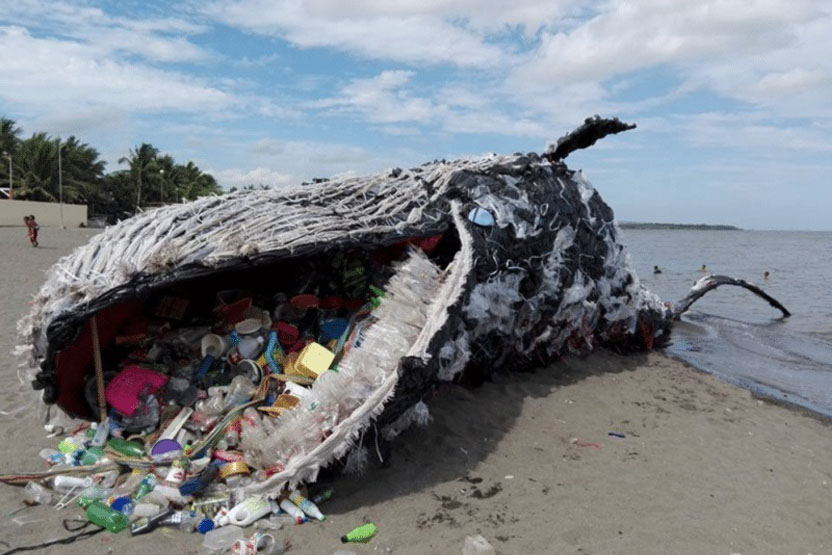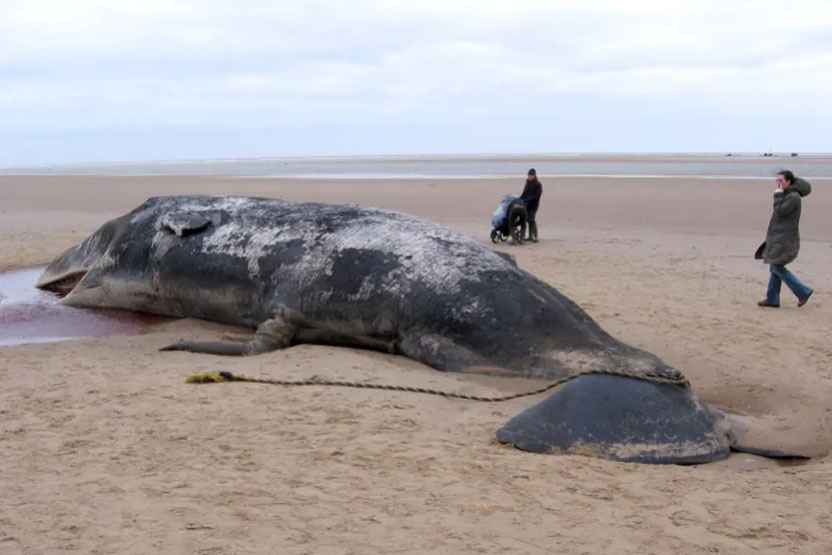the giants of the oceans are turning into plastic vacuum cleaners.

A study conducted by marine biologists from Stanford University and published in the journal Nature Communications reveals that blue whales ingest on average 10 million plastic fragments per day, amounting to around 43.5 kg of waste. This alarming finding casts a harsh light on the growing impact of plastic pollution, a scourge still largely underestimated compared to other environmental issues such as gas emissions or climate change.
Massive and indirect ingestion
Contrary to what one might think, these microplastics are not swallowed directly from the water. They are ingested via the food chain, particularly through krill, a small crustacean that these cetaceans mainly feed on. Indeed, the size of plastic particles is comparable to that of the natural prey of baleen whales, which filter their food using keratin plates.
Staggering numbers
The study focused on 29 fin whales, 126 blue whales, and 65 humpback whales in the coastal waters of California. It estimates that:
Humpback whales consume an average of 4 million plastic fragments per day (i.e. 38 pounds, around 17 kg), and up to 200,000 for those that feed more on fish than on krill.
Fin whales (or minke whales) ingest around 6 million pieces per day, or up to 57 pounds (around 26 kg) of plastic.
At the current pace, a blue whale can thus ingest more than a billion plastic particles during its feeding season, which generally lasts 3 to 4 months. The total weight of plastic absorbed can vary from 230 kg to 4 tons depending on the individual.
A worsening threat
Researchers warn: these estimates come from relatively moderately polluted regions such as the west coast of the United States. In other areas of the globe, far more contaminated, the quantities could be significantly higher. If plastic pollution continues to grow at the current rate, some whales could be exposed to up to 150 million particles per day.
Matthew Savoca, marine biologist and co-author of the study, specifies: "Even in so-called moderately polluted areas, baleen whales are already consuming several million plastic fragments daily."
100,000 marine mammals die each year because of plastic pollution
An impact still poorly understood
The consequences of this massive ingestion remain partially unclear. Some research suggests that whales expel these particles in their excrement. Other studies have identified traces of chemicals linked to plastic in the tissues of stranded individuals, raising concerns about toxic accumulation.
Beyond whales, plastic pollution is responsible every year for the death of 100,000 marine mammals, according to UNESCO. Dolphins, fish, and seabirds are also victims, often found with stomachs full of waste.
The urgency to act
Despite efforts to reduce greenhouse gases and the development of renewable energy, plastic continues to invade the oceans. Worse still, half of the plastic present on Earth today has been produced in the last twenty years.
Only about 9% of plastic sold each year in the United States is recycled. And every year, 13 million tons of plastic waste end up in the world’s seas — the equivalent of a garbage truck dumped into the sea every minute.
Towards a less plastic planet?
While some species of cetaceans, such as gray whales or humpback whales, are only just beginning to recover from chemical pollutants banned in the 1970s (like DDT or PCBs), they are now facing a new threat, invisible but omnipresent: microplastic.
Reducing plastic pollution means profoundly rethinking our dependence on single-use plastic, developing ambitious source-reduction policies, and intensifying awareness efforts. Protecting the oceans also means protecting the largest animals on the planet... and the fragile balance of our entire ecosystem.



Comment
Reply